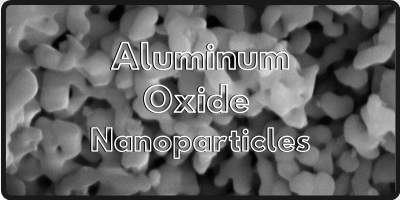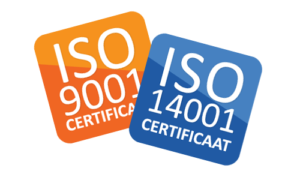Aluminum Nitride (AIN) Nanoparticles
Aluminum nitride is a compound having remarkable characteristics such as high thermal conductivity. Due to these characteristics, it has a wide range of applications in the electronics sector. The thermal conductivity of Aluminum nitride is in the range of 170-180 W/mK. This is greater than a lot of other ceramics. Moreover, Aluminum nitride can be easily metalized and it is considered a good electric insulator. This characteristic makes it possible to use Aluminum nitride as a heat sink or where the quick heat removal is desired. Aluminum nitride can be found in large shapes, thin substrate, or in powder form. The characteristics of Aluminum nitride are even more effective in the form of nanoparticles. Therefore, in this article, we aim to discuss the properties, applications, and potential of Aluminum nitride nanoparticles for future use.
Introduction
Aluminum nitride has exceptional chemical resistance and thermal conductivity. AlN is a wide-bandgap semiconductor (6.2 eV). It is a refractory and electrically insulating material having a very high thermal conductivity (higher than that of copper at 200 °C) and having a high resistance to oxidation and abrasion. It has potential applications as a substrate and in power electronics for the manufacture of microwave power transistors. Aluminum nitride is synthesized by the thermal reduction of alumina. It is transparent to visible wavelengths and infrared (0.5 to 3 μm) and can be used as a window for infrared and radars.
But let’s first find out about Aluminum to develop a better understanding of Aluminum Nitride:
About Aluminum
Aluminum is a soft and silvery-white metal with atomic number 13. It has remarkable characteristics. The fusibility (a term used to refer to the melting temperature) of aluminum is 660˚C. Its toughness can be modified by alloys, but in general, it is significantly lower than iron. The comparison of its lightness with glass is confusing. Depending on the composition of the glass, whose density can vary from about 2 to 8 tons per cubic meter, the density of aluminum is approximately 2.7 tons per cubic meter, which is much lower than that of iron (7.8 ton/m3).
The low density of aluminum in relation to iron (just about 3 times less) is undoubtedly one of the most attractive properties of aluminum. The possibility of having metallic instruments much lighter than the existing ones was what led several researchers to seek improvements in the Deville process. At the end of the 19th century, Paul Heroult (French) and Charles Martin Hall (American) independently developed a process to efficiently extract metallic aluminum from the most common oxide, alumina. Both researchers mutually recognized each other’s originality and, to date, the process is known as Hall-Heroult and is still widely used to produce metallic aluminum. The Hall-Heroult process was complemented by that of Karl-Josef Bayer (son of the founder of the famous pharmaceutical company) who developed an economical way to produce alumina from the most abundant aluminum ore: bauxite. Thus, at the beginning of the twentieth century, aluminum made its triumphant arrival in the global context of metallic materials.
The previous sentence is not a hyperbole. By the middle of the 20th century, aluminum alloys were the second most used in the world, only below ferrous ones. Its low density allowed aluminum to be used in multiple applications where low weight metal elements were needed. And among those applications, the manufacture of transport vehicles is the most important. This was recognized by the Wright brothers, who in 1903 ordered the crankcase (crankshaft support) of their famous aircraft to a local aluminum smelting company. This fact happens to the second term before the relevance of the historical flight, but it meant that aluminum could be used successfully in engine parts. In 1957, the Soviet Union launched Sputnik 1.
At present, as with all metals, the properties of aluminum are improved through alloys. It is possible to empty it in complex shapes and thanks to its crystalline structure, it can withstand large deformations. The applications of aluminum alloys range from the fuselage and aircraft wings (often reinforced with carbon fibers), multiple car parts (such as engine heads, pistons, and wheels), ladders and scaffolding, to beverage cans and ultrathin sheets commonly known as the foil. In Mexico, the manufacture of aluminum alloy products is one of the most important processing industries. According to 2017 data, the production of aluminum parts reports profits of about seven billion dollars annually.
Aluminum has many important compounds such as Aluminum Nitride. Let’s have a look at the characteristics of Aluminum Nitride.
Click Images to Read About Aluminum Oxide Nanoparticles
Properties of Aluminum Nitride
The properties of ceramic aluminum nitride are unique as it combines high electrical resistivity with high thermal conductivity. It is to be noted that not all ceramics possess high thermal conductivity. Only Cubic boron nitride, beryllium oxide, and aluminum nitride possess this characteristic. But, beryllium oxide cannot be used due to its high toxicity. On the other hand, cubic boron nitride is very complicated to manufacture. Thus, only aluminum nitride is an effective compound to use in applications where high thermal conductivity is required.
Thermal Conductivity is defined as the capacity of a component to conduct heat due to temperature difference. Heat is conducted in Aluminum Nitride via reticular vibrations, which is also termed as “phonons”. It has been noted that materials having low atomic mass, simple structure and covalent bonds possess high thermal conductivity.
Several factors affect the thermal conductivity of the material by hindering the transmission of phonons. These factors include Temperature, pore size and distribution, impurities, grain size, orientation, and homogeneity of the composition. They affect network vibrations which hinder thermal conductivity.
AIN has very high thermal conductivity, up to 220 W. It is around ten times higher as compared to alumina. The theoretical value of thermal conductivity for aluminum nitride is around 280 W/mK. The actual value of thermal conductivity for aluminum nitride is dependent on the purity of the raw material and the processing conditions.
The impurities of oxygen are a significant detriment in this regard because it replaces nitrogen in the structure of aluminum nitride and leaves spaces that hinder the transmission of phonons and disperse them which in turn affects the thermal conductivity of aluminum nitride. AIN devices have high hardness, high modulus, very high dielectric properties, good oxidation-resistant property and efficient low-thermal expansion, which is approximate to of silicon. When using AlN’s powers to make compounds, its interface compatibility is good. It can improve thermal conductance, mechanical properties, and dielectric properties of compounds.
In short, the main characteristics of aluminum nitride powder:
1.Excellent thermal conductivity
2.High operating temperature
3.Low coefficient of thermal expansion
4.Low dielectric constant
5.Good electrical insulation and electrical resistivity
6.Mechanical resistance in compression
7.The corrosion resistance of gases
8.High thermal conduction, 5 times that of alumina
9.Resists molten metals (aluminum, copper, lithium, etc.)
10.High purity
11.Attacked by acids and alkalis
Applications of Aluminum Nitride Nanoparticles
Aluminum Nitride Nanoparticles are widely used in the ceramic substrate.
Aluminum nitride ceramic (AIN) with high thermal conductivity, low coefficient of thermal expansion, high strength and other characteristics, as well as good mechanical properties, is considered the next generation of high-performance ceramic substrate and packaging material of choice.
Aluminum nitride ceramic (AIN) has two very important properties that are worth highlighting: a high thermal conductivity and an expansion coefficient of whether they are combined. The disadvantage is that even on a very thin oxide surface, the oxide layer will have an impact on the thermal conductivity of the materials and will process only strict control to create a better substrate consistency. AlN has still immaturity of large-scale domestic production technology, relative to Al2O3, since many relatively high prices, this is a bottleneck that restricts its development but researchers are consistently working to overcome this aspect.
AIN ceramics have a high thermal performance for the high power semiconductor substrate, the natural heat cooling process to achieve its objectives, but also has good mechanical strength, excellent electrical properties. There is a need to improve domestic manufacturing technology, and the price is more expensive, but its annual growth rate is more than 4 times to ceramics, beryllium oxide, and later can be replaced by a series of non-rust ceramics.
The other main uses of aluminum nitride (AIN) nanoparticles are:
1.Heat sink materials for power transistors, thyristors, LDs and LED
2.Electronic components where electrical dissipation of insulation and heat is required
3.Circuit substrates of semiconductor modules and IC packages
4.Crucibles for molten metals, vacuum deposition, and single crystals
5.Window materials for infrared and radar applications
6.Heat sink for uncooled power laser diodes
7.Components where a low dielectric constant and a low dissipation factor are required
8.Fasteners where a low coefficient of thermal expansion is required
9.Electrical insulator for electronic tubes
10.Electrical insulator for lasers
11.Chip holder for sensors and detectors
12.Electrical insulator (chuck, clamp ring) for semiconductor process machines
13.Substrate and insulator for microelectronic circuits, for optoelectronic systems
Research
Researchers from the Higher Council for Scientific Research (CSIC) have developed supports for low-energy LED bulbs that dissipate heat better. The development is based on the stacking of different multilayer substrates of aluminum nitride (AIN), a material with high thermal connectivity.
The manufacturing method of these supports will be transferred to a Russian company interested in its industrial development. A team from the Institute of Ceramics and Glass of the CSIC has developed the methods to tape the substrates and incorporate the tungsten circuits by screen printing. In addition, it has carried out the stacking processes of the different layers and heating them at a temperature of 1,900 °C so that they are perfectly integrated into the system.
These LED bulbs are characterized by much lower power consumption, longer life, smaller size, durability and resistance to vibrations. According to the Researchers, “Aluminum nitride is a material that dissipates heat very well and is ideal to withstand high power densities, which generate a lot of heat, as in the case of LEDs. Ceramic brackets of this type help to cool, further prolonging the durability of the bulbs”. The research is of high importance for the development of other ceramic products with high added value, such as biomaterials used in bone restoration or ceramic shields.
In conclusion, Aluminum nitride (AlN) is of great importance particularly due to its high thermal conductivity which is about 5-10 times as of alumina ceramic. Moreover, it has a low dielectric constant and dissipation factor, outstanding mechanical properties, good insulation, high heat resistance, non-toxic, chemical resistance, and the linear expansion coefficient is the same as of Silicon. Aluminum nitride (AlN) is extensively being used in the electronics industry and in the form of nanoparticles; Aluminum nitride (AlN) is unleashing more interesting applications.
References
https://www.azom.com/article.aspx?ArticleID=4463
https://www.azonano.com/article.aspx?ArticleID=3317
https://www.sciencedirect.com/topics/chemical-engineering/aluminum-nitride
https://www.sciencedirect.com/topics/materials-science/aluminum-alloys
You must be logged in to post a comment.



About the author